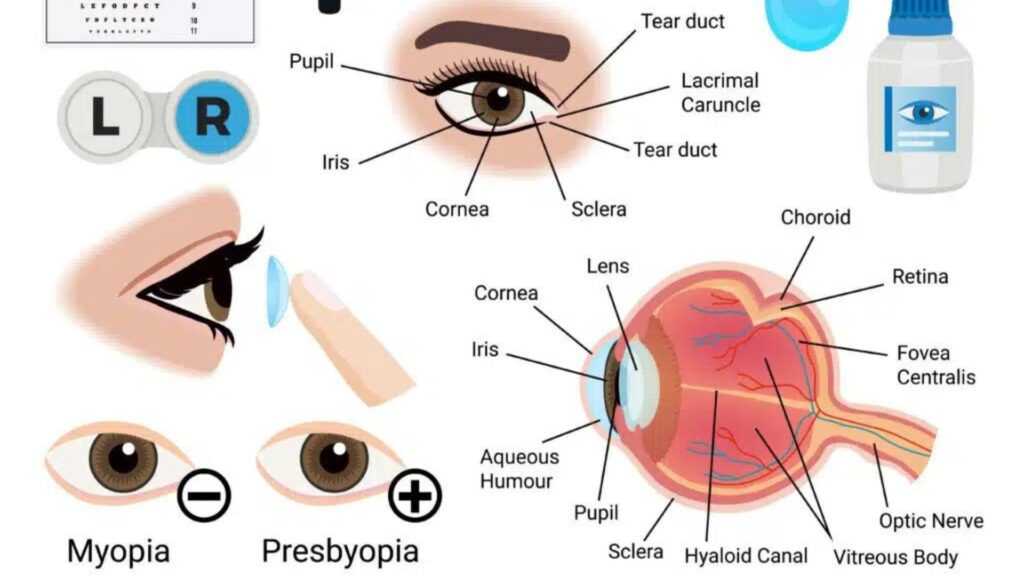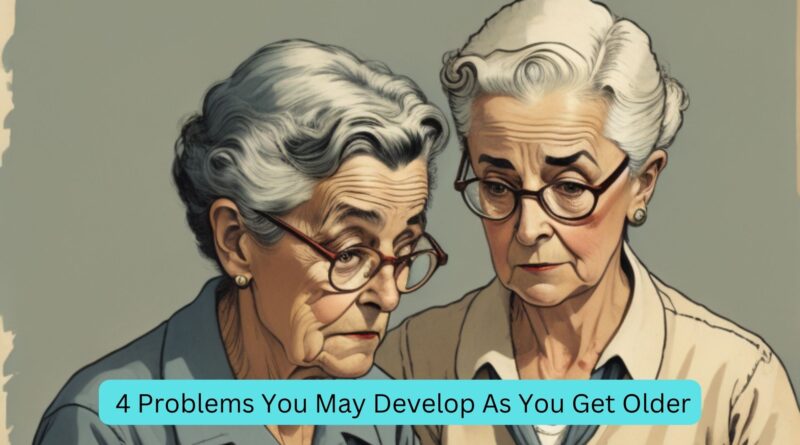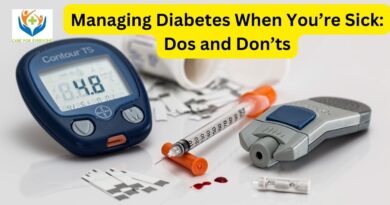4 Problems You May Develop as one grow Older
If you could learn a little bit about the problems affecting your eyes as we age, you will be in a better position to understand retinal detachment. Did you know that your eyes can reveal a lot about your age? If you are one of those who think that the eyes are the window to the soul, then you will be surprised to know that even your eyes have secrets.
The Aging Eye: A Window into Your Health

The condition and appearance of your eyes can tell a lot about how old you are. Let’s take a look at some eye problems that might develop if you are getting older.
1. Dry Eye Syndrome
Our eyes are kept moist, smooth, and clear by a fluid called tears, produced by a gland called the Lacrimal Gland, located in the eyelids. Tears have three layers that help in maintaining eye health.
Dry eyes can happen when you don’t produce enough tears or the quality of your tears is poor. Some common causes of dry eyes are:
- Continuous gazing at electronic items like smartphones, TV screens, and computer screens.
- Aging, especially after the age of 35, which can result in the lacrimal gland becoming less efficient.
Dry eye syndrome can cause blurry vision, difficulty reading, and headaches. While the symptoms aren’t usually serious, it’s essential to seek treatment from your eye doctor to alleviate discomfort.
2. Presbyopia
Presbyopia is a natural condition that occurs as we grow older due to the stiffening of the lens in the eye. It makes it challenging to see objects up close, like the words on a book or a computer screen.
Options for managing presbyopia include wearing reading glasses, using larger computer monitors, or undergoing LASIK surgery.
3. Macular Degeneration
Macular degeneration is one of the leading causes of blindness among the elderly. It damages the retina, which is responsible for processing images and transmitting them to the brain. Symptoms include blurry vision, loss of color perception, hazy vision, and blind spots in your field of vision.
While there is no way to prevent macular degeneration, there are treatments available to slow down its progression. Regular check-ups with an eye doctor are crucial for early diagnosis.
4. Glaucoma
Glaucoma is a condition that damages the optic nerve of the eye, often due to increased intraocular pressure. People with glaucoma usually do not notice symptoms until the disease has progressed significantly.
Regular check-ups with your eye doctor are vital to detect glaucoma early. Treatment options include eye drops, medications, and surgery.
5. Cataract
Cataracts are a common eye condition that often develops with age, causing clouding of the lens inside the eye. This can make it harder to see close-up and distant objects.
There is no way to prevent cataracts, but regular check-ups with an eye doctor can help diagnose and treat them early. Surgery is an option for cataract removal.
6. Retinopathy
Retinopathy occurs when there is a break in the retinal blood vessels, with diabetic retinopathy being the most common type. Regular check-ups with an eye doctor can help catch retinopathy early and slow down its progression.
7. Dark Circles Under Your Eyes
Dark circles under your eyes can result from both aging and other factors like lack of sleep or certain health conditions. Drinking more water and using eye creams containing hyaluronic acid and vitamin C may help reduce their appearance.
Conclusion
Your eyes can reveal a lot about your age and overall health. If you notice any of the eye problems mentioned, make sure to see your eye doctor regularly for diagnosis and treatment. While aging brings about various eye issues, taking proactive steps and seeking medical advice can help you maintain good eye health.
FAQs
At what age does presbyopia typically begin?
Presbyopia typically begins to affect individuals in their 40s or 50s.
Can macular degeneration be cured?
There is no cure for macular degeneration, but treatments are available to slow down its progression.
Who is at the highest risk of developing glaucoma?
Glaucoma is most common in people over the age of 60, but it can affect anyone.
How are cataracts removed?
Cataracts are typically removed through surgery.
What can I do to reduce the appearance of dark circles under my eyes?
You can try staying hydrated and using eye creams with ingredients like hyaluronic acid and vitamin C to reduce the appearance of dark circles.
Final Words
If you found this article valuable, consider sharing it with friends and groups via the social media icons below. Alternatively, click here to access more informative content.




